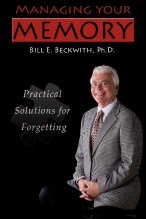Now that 70 is in my rear-view mirror, I am increasingly attracted to articles with tittles like “A Plan For Successful Aging” (health.harvard.edu). I am officially one of those “geriatric” clients with whom I have worked for nearly three decades. I am one of the “young old.” I feel that the quality of the rest of my life requires that I don’t focus on the past – I can’t change it. I am the result of my genetics and cumulative experiences (the easy and the difficult, the mistakes and the successes). What follows is my general outline to protect my future as well as I can.
1) Be proactive. Don’t wait for the first fall to take action. I have been “thinking about” getting a medical alert device for my mother-in-law. She recently fell in the bathroom and was unable to get up. Twelve hours later, someone from the facility where she lives missed her and decided to check. Fortunately, there were only a few bruises. She now has a medical alert bracelet and grab bars by the toilet. Knowing isn’t doing. We all need to make safety checks of our home and take action to make our homes safer. Consider a safety evaluation by either an occupational or physical therapist.
2) Reduce the risk of falls. Falls are increasingly a “big deal” as we age. Exercise to keep strong. Do yoga or tai chi for balance.
3) Where should I live? Despite our strong desire to live alone or with our companions in our home, we need to face the fact that there are risks that we need to consider. Isolation and lack of engagement can have devastating consequences for the quality of life as we age. I need to soul search and move to a community with multiple services and opportunities for engagement before I actually need it. This is especially true if you have considered a Continuing Care Retirement Community, as you may not qualify if you have medical or cognitive changes.
4) Get advanced directives in place. Do you have a living will? Do you have a Durable Power of Attorney or equivalent? Who will you manage you money, credit cards, and investments? How will you know when it is time to turn over the checkbook? Who will manage as your financial and medical advocate/surrogate? Do they know where things are and what they need to manage?
5) Attend to risky behaviors. Limit alcohol consumption. Drive within the limits of the changes in senses and speed of thinking/reacting that come with age. Have a plan for how to know when you are no longer safe to drive and how you will get around. Work with your physician to manage health variables that you can influence such as blood sugars and blood pressure.
6) Exercise most days of the week.
7) Stay intellectually and socially engaged.
8) Liberally use external memory supports like calendars and to do lists. Don’t forget the One Minute Rule.
Stay ahead of life where you can. It’s the quality of the years not the number that makes for successful aging. Even with the challenges presented by progressive diseases like Alzheimer’s, Parkinson’s, and diabetes, they take years to unfold and don’t always produce disability.




